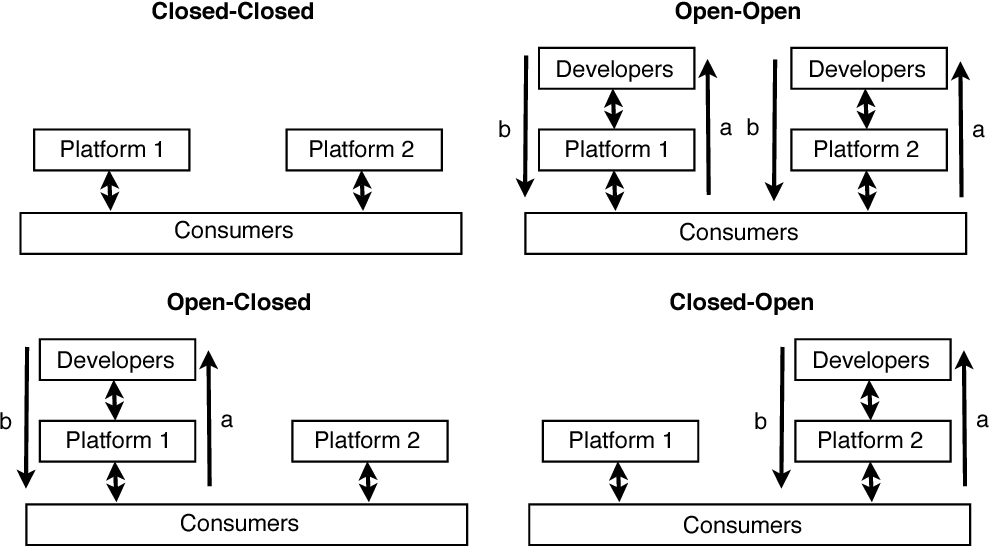Introduction
In the digital age, the concept of open versus closed platforms has become increasingly relevant in decision-making processes. This mental model examines the degree of openness and accessibility of a platform or system. Open platforms allow for flexibility, collaboration, and innovation, while closed platforms exert control and limit freedom. Understanding this model is crucial as it influences our choices in personal, business, and public policy contexts. In this blog post, we will explore the concept of open vs. closed platforms, its psychological underpinnings, practical examples, and strategies to avoid the pitfalls of this mental trap.
The Relevance of Open vs. Closed Platforms
The choice between open and closed platforms can significantly impact our ability to access information, collaborate, and make informed decisions. This model affects a wide range of contexts, from the technologies we use to the policies that shape our societies. Recognizing the implications of open vs. closed platforms empowers us to navigate decision-making with a deeper understanding of their consequences.
Anchored in Human Psychology and Everyday Prevalence
The open vs. closed platform mental model is anchored in human psychology and manifests in various aspects of our lives. Consider the following examples:
- Personal Life: Consumer Technology Choosing between open and closed platforms is evident in the technology products we use. For instance, selecting an open-source operating system like Linux allows for customization and collaboration, whereas opting for a closed platform like Apple’s iOS restricts user freedom and limits software choices.
- Business Scenario: Ecosystem Control Companies often face decisions about whether to adopt open or closed platforms when developing products or services. Closed platforms provide more control over the user experience, while open platforms foster innovation and attract a broader developer community. Choosing a closed platform may result in limited compatibility, vendor lock-in, and reduced flexibility.
- Public Policy: Intellectual Property Rights Open vs. closed platforms also play a role in shaping public policy. The debate surrounding intellectual property rights and copyright laws reflects the tension between open access to information and the protection of creative works. Striking the right balance is crucial to encourage innovation while ensuring fair compensation for creators.
Mental Biases and Psychological Underpinnings
Several mental biases contribute to our preferences for open or closed platforms:
- Familiarity Bias: People tend to favor what is familiar and comfortable to them. This bias may lead individuals to choose closed platforms due to their familiarity, even if open platforms offer more benefits.
- Loss Aversion: Humans have a natural aversion to losses. The fear of losing access to specific features or content may drive individuals to opt for closed platforms that offer exclusive or restricted content, even if it limits their overall freedom.
- Bandwagon Effect: Individuals tend to follow the crowd and conform to popular choices. If a particular platform gains significant popularity, people may gravitate toward it, even if there are more open alternatives available.
Avoiding the Trap of Open vs. Closed Platforms
To avoid succumbing to the open vs. closed platform mental trap, consider the following strategies:
- Seek Diverse Perspectives: Engage with different viewpoints and explore the pros and cons of both open and closed platforms. Evaluate how each option aligns with your values, goals, and long-term interests.
- Assess Long-Term Implications: Consider the potential long-term consequences of choosing open or closed platforms. Reflect on the impact on your personal freedom, collaboration opportunities, and future adaptability.
- Prioritize Flexibility and Compatibility: Embrace platforms that offer flexibility and compatibility with other systems. Prioritize open platforms that encourage collaboration, innovation, and customization, allowing for greater freedom in decision-making.
Conclusion
The open vs. closed platform mental model shapes our choices in personal, business, and public policy domains. By understanding the psychological biases that influence our preferences and employing strategies that prioritize diverse perspectives, long-term implications, and flexibility, we can navigate decision-making more effectively. Awareness and active avoidance of the open vs. closed platform trap enable us to make choices aligned with our values and promote innovation, collaboration, and individual freedom.
